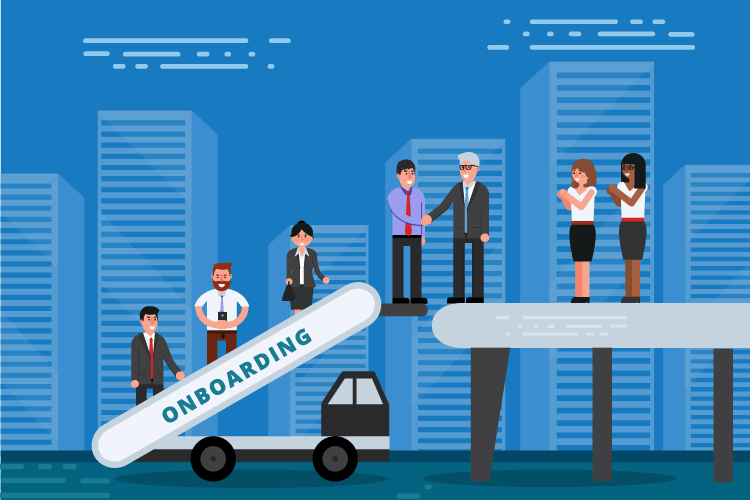Employees expect more from their employer than a paycheck. They want to work at a place in which they feel truly valued. Therefore, it makes sense for companies to focus more on the quality of the employee experience as this can pay off big for both the employee and the employer. Companies that deliver an exceptional employee experience can:
- Enhance their brand.
- Enjoy more profits. Companies that focus on the employee experience are generally four times more profitable.
- Create and foster a collaborative culture that works hard, plays hard, and solves problems together more efficiently.
- Increase productivity.
- Boost retention.
- Have a positive impact on the customer experience.
While the benefits of having an exceptional employee experience is rewarding, the challenge for many companies is being able to implement and deliver such an experience that achieves these results. Today, many companies tend to focus mainly on providing superficial perks like free food and a fun breakroom to relax in, which can be a dangerous relationship game to be in. Instead, what companies should be focused on is developing a solid strategy with these perks as a bonus. One of the areas that companies could focus is to look at all the employee touchpoints throughout their lifecycle from hiring to termination and enrich these experiences to create a sense of goodwill, belongingness, and care. Much of this can be achieved by automation of many of the day-to-day HR business processes involved.
When it comes to automation, three tools many companies are investing heavily into today include bots, artificial intelligence (AI), and application integration platforms. Let’s do a quick overview of each below:
1. Bots
Whenever people hear the word “bot” or “robot” they tend to immediately think that their job may be on the line. Yes, some jobs have been replaced by robots, but these were jobs that were mostly performing repeated mundane tasks. These tasks needed to be automated to free up time for HR teams to focus on more strategic initiatives, such as delivering an exceptional employee experience. Bots are instrumental in helping HR teams to achieve this objective, especially during the employee onboarding phase.
An example of a company using bots to transform their onboarding experience is happening at the telecom company, Reliance Jio. At Reliance Jio, their goal is to mirror the time it takes to onboard a new employee with the time it takes to onboard a new customer – five minutes. Bots are used to make sure documents submitted by the employees are accurate and that the data filled in their system is the same as what’s been sent over by the employee. By using bots, Reliance Jio can onboard new employees in 90 seconds.
2. AI (Artificial Intelligence)
Companies like Microsoft, Facebook, Google, and Amazon are pouring millions of dollars into AI research and development, and AI has been making a big positive splash for HR teams. General Electric (GE) and Hilton Worldwide for instance leverage AI to enhance the job interviewing process. AI is used to scan work samples, review social media activity and posts, and analyze faces. Unilever is another example using AI. In addition to asking candidates to play neuroscience games that check for inherent traits, they also record interviews, which allows AI to analyze data points, such as word choice, facial movements, and speech patterns.
3. Application Integration
Application integration is another area in which companies are heavily investing to eliminate mundane tasks and enhance the employee experience, especially during the employee onboarding phase. Many HR teams in mid-to-large enterprises use a human capital management (HCM) platform such as ADP or Workday® as a master system of records for employee information, benefits, compensation, payroll, time and absence, etc. HCM systems manage employee hiring and onboarding. Once an employee is hired, the new employee must be manually provisioned in Active Directory to create an identity. He or she is then assigned privileges to the systems and tools that he or she will need access to perform their job. This entire process from start to finish is not a scalable model for growth as it can take at a minimum two (2) hours or more to onboard and provision new employees with access to the tools and enterprise systems needed to perform his or her job. Companies such as Topgolf and Katerra, have an application integration workflow in place that automatically propagates new hires and changes in employee profiles in ADP or Workday® to their user identity in Microsoft Active Directory (AD), Office 365, and many other SaaS, on-premise applications, and services.
Not only does this result in a 90% reduction in the work required to onboard new employees, but it also saves both companies a ton of money. In addition, this integration workflow has a direct positive impact in boosting productivity as employees have access to the tools they need from the get-go, which in turn helps to enhance the overall employee experience.
Companies that invest wisely into delivering an exceptional employee experience with the help of automation can greatly separate themselves from the competition as a top place to work. Bots, AI, and application integration platforms can be used to help HR teams achieve this goal, which in turn benefits both the employee and the employer.






